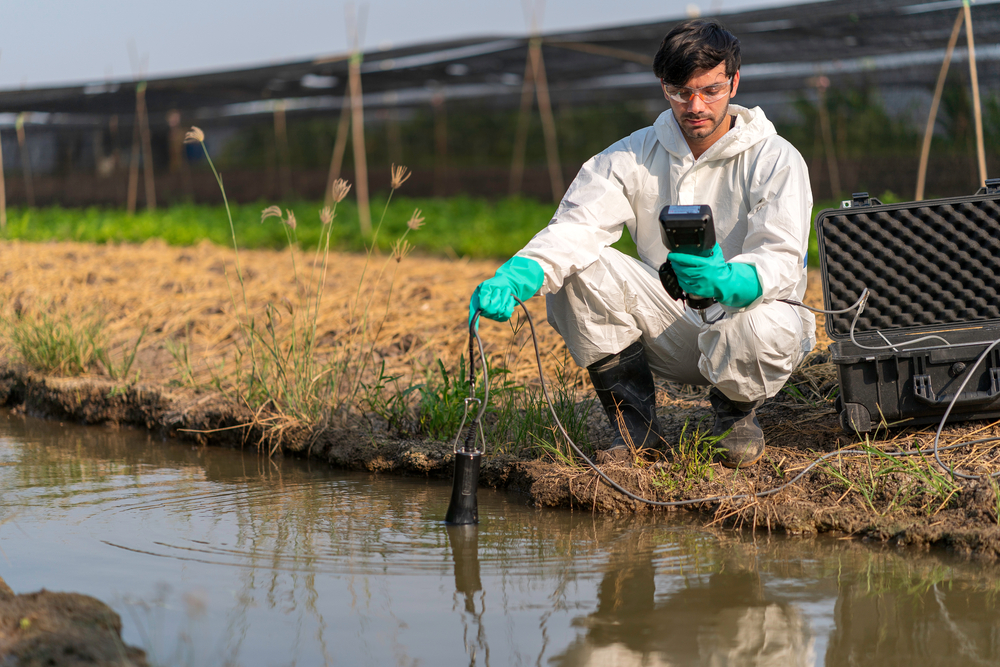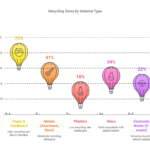As Canada intensifies its commitment to environmental sustainability, the demand for skilled environmental technicians is surging. These professionals are pivotal in monitoring, managing, and mitigating environmental impacts across various sectors. Canada’s environmental technician staffing landscape is examined in this article, covering employment trends, salary benchmarks, regional variations, and anticipated future developments.
The Evolving Landscape of Environmental Technician Roles
Environmental technicians in Canada are at the forefront of efforts to ensure compliance with environmental regulations, conduct site assessments, and implement remediation strategies. Their roles span across industries such as construction, manufacturing, energy, and government agencies.
The increasing emphasis on environmental protection and sustainable practices has led to a diversification of responsibilities for environmental technicians. They are now involved in tasks ranging from air and water quality monitoring to hazardous waste management and environmental impact assessments.
Employment Trends and Projections
Employment for environmental technicians is expected to experience a moderate risk of labor shortage over the period of 2024–2033. This projection underscores the growing need for qualified professionals in this field.
In 2023, approximately 27,400 individuals were employed as environmental technicians in Canada, with 22% of these workers aged 50 and over, indicating a significant portion of the workforce approaching retirement. This demographic trend is expected to contribute to increased job openings in the coming years.
Estimates suggest that one in every 15 workers in Canada will be in an environmental role in 2024, highlighting the sector’s expanding footprint in the national labor market.
Salary Benchmarks and Compensation
Environmental technicians in Canada enjoy competitive compensation, reflecting the specialized skills and knowledge required for the role.
The average hourly wage for environmental technicians in Canada is approximately $26.60, with variations based on experience, education, and location.
Wages for environmental technicians range between $21.00/hour and $46.53/hour, depending on factors such as region and level of expertise.
In terms of annual compensation, the average salary is reported at $73,830, with entry-level positions starting at approximately $53,553 and senior-level roles reaching up to $90,657.
Regional Dynamics and Opportunities
The demand for environmental technicians varies across Canada’s provinces and territories, influenced by regional industries, environmental policies, and economic activities.
In Ontario, for instance, the employment outlook for civil engineering technologists and technicians, which includes environmental technicians, is considered moderate. This outlook is driven by factors such as infrastructure investments and population growth, leading to increased construction activities and environmental assessments.
British Columbia and Alberta also present significant opportunities, particularly in sectors like renewable energy, mining, and oil and gas, where environmental monitoring and compliance are critical.
Educational Pathways and Certification
Pursuing a career as an environmental technician typically requires a college diploma in environmental technology or a related field. For those aiming to advance to technologist roles, an undergraduate degree in environmental science or engineering is often necessary.
Certifications such as the Certified Environmental Professional (CEP) can enhance job prospects and credibility in the field. Additionally, provincial certifications like the Certified Engineering Technician (C.E.T.) designation are valuable credentials for professionals seeking to establish their expertise.
Emerging Trends and Future Outlook
The environmental sector in Canada is poised for significant growth, driven by factors such as climate change mitigation efforts, renewable energy projects, and stricter environmental regulations.
Projections suggest that the environmental workforce will grow by 24%, adding approximately 90,000 jobs by 2024. This expansion is expected to create numerous opportunities for environmental technicians, particularly in areas like environmental permitting, regulatory compliance, and climate resilience.
The integration of advanced technologies, such as Geographic Information Systems (GIS) and environmental modeling software, is also transforming the role of environmental technicians, necessitating continuous skill development and adaptability.
Labor Supply Challenges and Staffing Gaps
One of the most pressing challenges facing the environmental technician workforce in Canada is the aging demographic. Over 22% of environmental technicians are aged 50 or older. This aging trend suggests a looming wave of retirements, which could significantly shrink the experienced talent pool over the next decade.
This demographic pressure creates an urgent need for succession planning and proactive recruitment strategies across the industry. Companies and public agencies must prepare for knowledge transfer and mentorship programs to ensure the next generation of environmental technicians is well-equipped to fill these roles.
The COVID-19 pandemic disrupted numerous sectors, including environmental services. Many projects were put on hold or delayed due to lockdowns and resource constraints, leading to staffing fluctuations. Although recovery has been underway since 2022, the demand for technicians has outpaced the supply in some regions, particularly in remote or northern communities.
The imbalance is exacerbated by inter-provincial migration patterns, where talent often moves toward larger urban centers, leaving rural areas struggling to fill environmental positions.
Diversity and Inclusion in Environmental Staffing
Canada’s environmental sector is increasingly recognizing the value of Indigenous knowledge and participation in ecological stewardship. Environmental technician roles offer meaningful career pathways for Indigenous youth, especially in communities directly impacted by natural resource development.
Organizations have launched initiatives to improve access to training, apprenticeships, and full-time employment for Indigenous peoples. These programs focus on building culturally relevant curricula and fostering community-based environmental monitoring.
While traditionally male-dominated, the environmental technician workforce is seeing gradual shifts in gender representation. Post-secondary institutions are reporting increased enrollment of women in environmental technology programs, particularly in provinces like Quebec, Alberta, and British Columbia.
Diversity-focused hiring practices are also being adopted by larger employers in government and industry. Still, challenges remain in ensuring equitable representation at leadership levels and in field-heavy roles that require travel or physical labor.
Role of Temporary Staffing and Contract Work
Much of the work environmental technicians perform is tied to specific projects—such as site assessments, compliance audits, or remediation contracts. As a result, short-term and seasonal contracts are common in the industry.
Staffing firms and temporary labor agencies have become critical players in supplying environmental technicians for government tenders and corporate projects. Employers prefer this flexible staffing model to manage budget constraints and workload peaks.
However, this trend raises questions about job stability and access to benefits for environmental technicians. Contract workers often lack long-term employment security, despite contributing essential services to Canada’s environmental priorities.
While environmental technicians are less likely to be unionized than trades or public service workers, labor advocacy is growing. Worker groups are beginning to push for fair wages, health coverage, and professional development support, especially in high-risk fieldwork environments.
As the industry matures, labor organizations may play a larger role in standardizing working conditions and promoting career advancement for technicians across Canada.
Environmental Policy and Government Influence
Environmental technicians operate within a complex regulatory framework that includes federal statutes, provincial laws, and municipal bylaws. Their roles are directly influenced by environmental assessments, emissions reporting requirements, and conservation mandates.
Recent policy shifts—such as the federal government’s 2030 Emissions Reduction Plan—have expanded the scope of environmental monitoring and compliance, increasing the need for technicians to carry out field testing and reporting.
Each province interprets and enforces environmental regulations differently. For example:
- Alberta: Strong demand for technicians in oil sands monitoring and land reclamation.
- British Columbia: Increased staffing for water quality management and habitat protection due to forestry reforms.
- Quebec: Growth in roles tied to industrial emissions tracking and green infrastructure projects.
To combat climate change and stimulate employment, both federal and provincial governments have launched “green jobs” initiatives. Programs such as the Green Jobs for Youth Program and the Canada Greener Homes Grant have indirectly increased the demand for environmental technicians to support energy audits, retrofitting assessments, and ecological surveys.
These policies serve as a dual tool for environmental progress and workforce development, making technician roles more visible and accessible to students and career switchers alike.
Academic and Training Institutions Feeding the Pipeline
Several Canadian institutions have emerged as leaders in producing job-ready environmental technicians. Notable programs include:
- Fleming College (Ontario) – Recognized for its Environmental Technician Diploma with a strong co-op component.
- British Columbia Institute of Technology (BCIT) – Offers hands-on training with modern field equipment and lab technology.
- Northern Alberta Institute of Technology (NAIT) – Known for preparing graduates for oil and gas-related environmental compliance.
- Cégep de Saint-Félicien (Quebec) – Offers a bilingual curriculum emphasizing forestry and wildlife management.
These institutions frequently collaborate with industry partners to align their programs with market needs, enhancing graduate employability.
In addition to diplomas and degrees, many technicians are pursuing microcredentials in GIS, hazardous waste handling, environmental impact analysis, and drone mapping. Online platforms and certification bodies have expanded access to professional development, especially for remote workers and part-time students.
These short courses are increasingly recognized by employers and can fast-track career progression or transition from other technical fields into environmental roles.
Key Takeaways
- The Canadian environmental technician sector is experiencing robust growth, driven by climate policy, industrial development, and ecological regulation.
- A wave of retirements is expected to create thousands of job openings, presenting opportunities for younger workers, immigrants, and underrepresented groups.
- Salaries are competitive, with average earnings exceeding $70,000 annually for experienced technicians.
- Government investment in green jobs and environmental compliance continues to increase technician demand across industries.
- Challenges persist in labor supply, regional disparities, and contract work stability—but solutions are emerging through training partnerships, government funding, and workforce advocacy.









